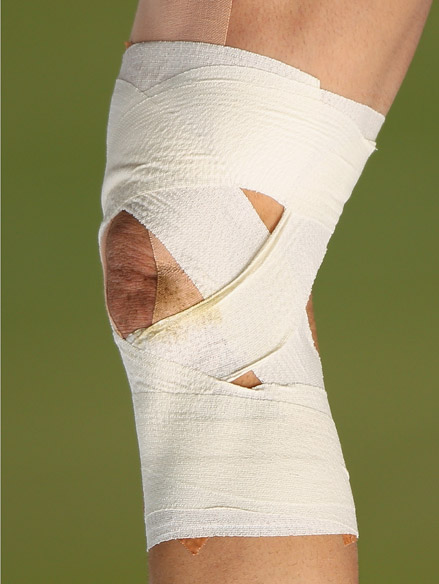Ligament injuries
Ligament injuries happen if a joint is twisted or forced into a position it is not normally comfortable in. Ligaments bind the bones together in joints and can become stretched or torn. If the ligaments tear altogether and the bones in the joint fall out of line, then a dislocation occurs.
Ligament injuries commonly occur in the ankle (a sprained ankle) or the knee (a twisted knee) or at the end of the collar bone in the shoulder (AC joint) but the ligaments of most joints can be injured, sprained or torn.
First aid is very similar to muscle injury in that it follows the DR ABC and PRICE regimen. Severely painful joints following a ligament injury may benefit from “splinting” or supporting the joint to protect it from further painful movements, e.g. a sling for the shoulder. A plastic bag of ice with water should be applied and compressed to the sore area for roughly 20 minutes with a light bandage or cling film and light compression applied after removal.
Ligament injuries or joint “sprains” can be difficult to tell from fractures, so early medical or physiotherapist review is needed. As in muscle injuries, if the player is having real difficulty walking or using the injured limb, then medical assessment is needed on the same day as the match.

Support the joint to protect it from further painful movements